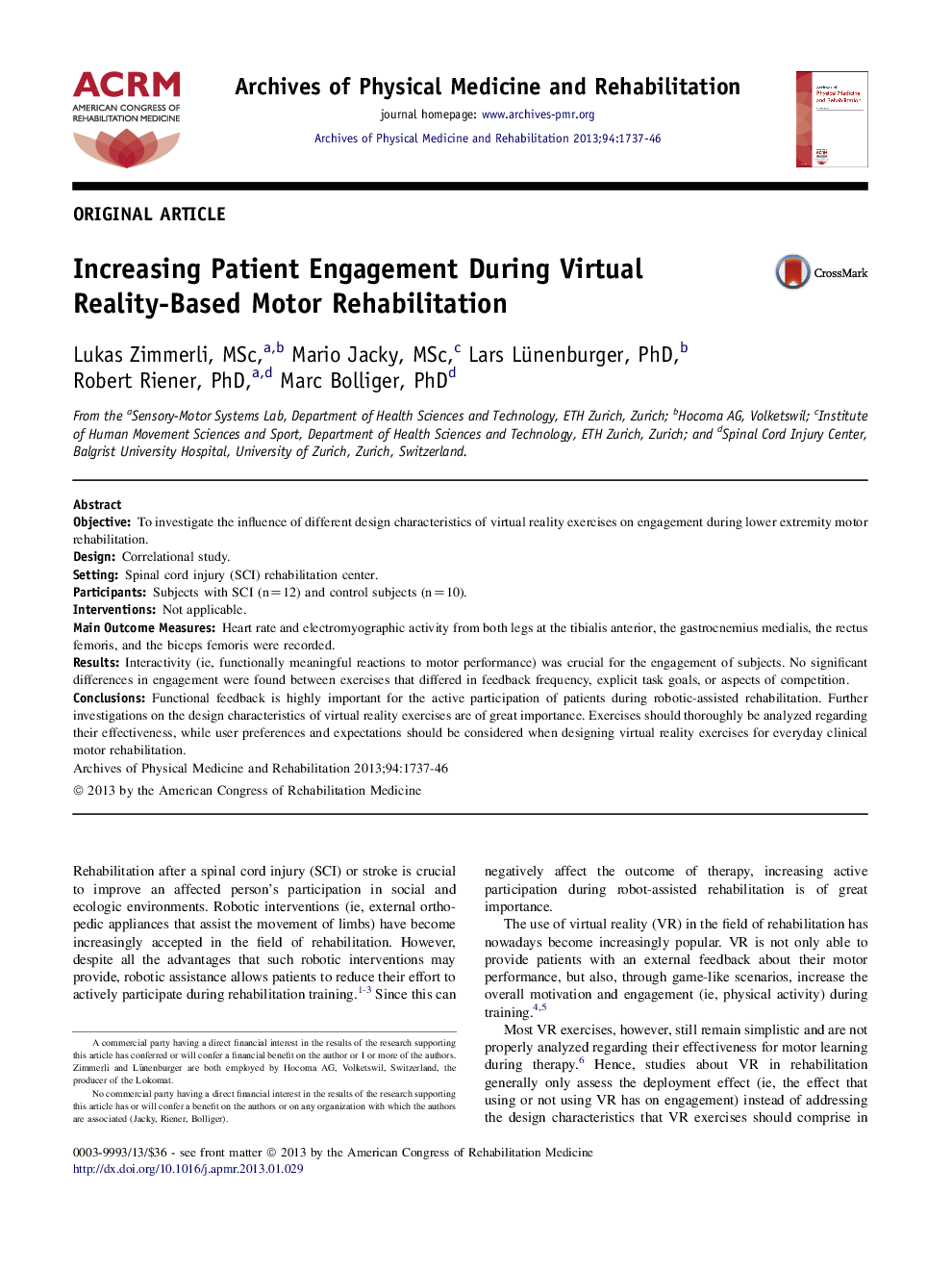| Article ID | Journal | Published Year | Pages | File Type |
|---|---|---|---|---|
| 3448970 | Archives of Physical Medicine and Rehabilitation | 2013 | 10 Pages |
ObjectiveTo investigate the influence of different design characteristics of virtual reality exercises on engagement during lower extremity motor rehabilitation.DesignCorrelational study.SettingSpinal cord injury (SCI) rehabilitation center.ParticipantsSubjects with SCI (n=12) and control subjects (n=10).InterventionsNot applicable.Main Outcome MeasuresHeart rate and electromyographic activity from both legs at the tibialis anterior, the gastrocnemius medialis, the rectus femoris, and the biceps femoris were recorded.ResultsInteractivity (ie, functionally meaningful reactions to motor performance) was crucial for the engagement of subjects. No significant differences in engagement were found between exercises that differed in feedback frequency, explicit task goals, or aspects of competition.ConclusionsFunctional feedback is highly important for the active participation of patients during robotic-assisted rehabilitation. Further investigations on the design characteristics of virtual reality exercises are of great importance. Exercises should thoroughly be analyzed regarding their effectiveness, while user preferences and expectations should be considered when designing virtual reality exercises for everyday clinical motor rehabilitation.
